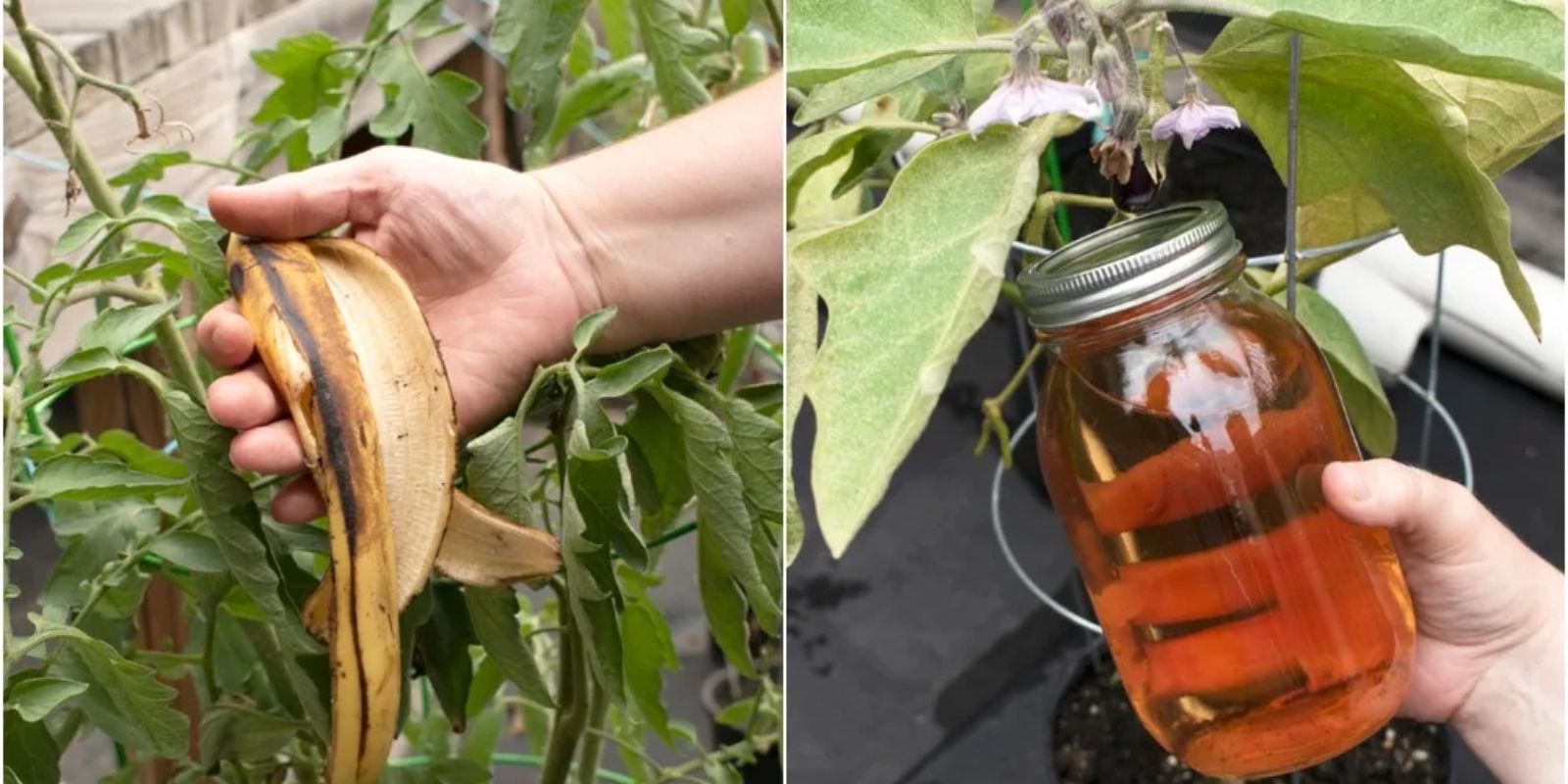Introduction
Gardening can be both a relaxing and rewarding activity, but it comes with its challenges. Two common issues gardeners face are dealing with persistent weeds and ensuring their plants receive adequate nutrients. Thankfully, there are effective, eco-friendly solutions to tackle both these problems. This article reveals the secret to maintaining a weed-free garden and how you can utilize banana peels as a natural, nutrient-rich fertilizer for your plants. By integrating these techniques, you can enjoy a healthier, more productive garden with minimal effort.
Part 1: The Secret to Growing a Weed-Free Garden
1. Understanding Weeds and Their Impact
Before delving into solutions, it’s essential to understand why weeds are such a significant problem:
- Competition: Weeds compete with your plants for sunlight, nutrients, and water, which can stunt your plants’ growth and reduce yields.
- Pest and Disease: Weeds can harbor pests and diseases that might spread to your garden plants.
- Rapid Growth: Many weeds grow quickly and can spread aggressively if not managed promptly.
Understanding these challenges helps in implementing effective strategies to control and prevent weeds.
2. Effective Weed Control Methods
A. Mulching:
- Purpose: Mulch serves multiple functions: it suppresses weeds, retains soil moisture, and improves soil health.
- Application: Apply a 2-4 inch layer of organic mulch (such as wood chips, straw, or shredded leaves) around your plants. This layer blocks sunlight from reaching weed seeds and reduces their ability to germinate.
- Maintenance: Reapply mulch as it decomposes or gets displaced to ensure continued effectiveness.
B. Landscape Fabric and Barriers:
- Landscape Fabric: Install landscape fabric or heavy-duty newspaper over garden soil before planting. Cut slits or holes for your plants and secure the fabric with stakes or pegs. This method blocks weed growth while allowing water and nutrients to reach your plants.
- Barriers: Use barriers like plastic sheeting or cardboard in areas prone to heavy weed infestations.
C. Regular Weeding:
- Hand-Pulling: Regularly inspect your garden and hand-pull weeds before they flower and set seeds. Hand-pulling is most effective when the soil is moist.
- Weeding Tools: Utilize tools like weed pullers, hoes, and trowels to assist with weed removal. Be careful not to disturb the roots of your plants.
- Proper Disposal: Avoid composting weeds with seeds or invasive characteristics. Dispose of them to prevent spreading.
D. Creating Dense Plantings:
- Close Spacing: Planting your crops closer together can shade the soil, reducing sunlight availability for weed seeds. This technique minimizes weed growth while also maximizing space and resources.
- Companion Planting: Use companion planting to grow plants that naturally repel weeds or outcompete them.
E. Organic Herbicides:
- Vinegar Solution: Mix white vinegar with water and apply it directly to weeds. This solution is effective on young, tender weeds but should be used carefully to avoid harming your plants.
- Salt: Use salt sparingly to kill weeds in areas where you don’t plan to grow plants. Be cautious to avoid contamination of surrounding soil.
- Boiling Water: Pour boiling water over weeds in cracks and driveways. This method is quick but should be used with caution around desirable plants.
F. Preventative Measures:
- Pre-Emergent Herbicides: Apply organic pre-emergent herbicides to prevent weed seeds from germinating. These create a barrier that inhibits seedling growth.
- Cover Crops: Plant cover crops like clover or rye during the off-season. They help crowd out weeds, improve soil health, and reduce erosion.
- Soil Health: Maintain healthy soil by adding compost and practicing proper fertilization. Healthy soil supports vigorous plant growth, which can naturally outcompete weeds.
3. Monitoring and Adapting
- Regular Checks: Continuously monitor your garden for new weed growth. Regularly assess the effectiveness of your strategies and adjust as needed.
- Seasonal Adjustments: Different seasons may require different weed control methods. Adapt your approach based on seasonal conditions and the types of weeds prevalent in your garden.
Part 2: How to Use Banana Peels to Fertilize Your Plants
1. The Benefits of Banana Peels
Banana peels are a fantastic resource for your garden, rich in nutrients that benefit plant growth:
- Potassium: Helps in flower and fruit development, improves overall plant health.
- Phosphorus: Supports root development and strengthens plants.
- Calcium: Aids in preventing blossom end rot and strengthens cell walls.
2. Preparing Banana Peels
A. Chopping:
- Cut into Small Pieces: Chop banana peels into small, manageable pieces. This increases the surface area, allowing for quicker decomposition and nutrient release.
B. Blending:
- Make a Slurry: Blend banana peels with water to create a nutrient-rich slurry. This method speeds up the release of nutrients and makes application easier.
3. Applying Banana Peels
A. Direct Application:
- Bury in Soil: Place chopped banana peels directly into the soil around your plants. Bury them a few inches deep to prevent pests and reduce odor.
B. Composting:
- Mix into Compost: Add banana peels to your compost bin. They decompose well and contribute valuable nutrients to the compost mix.
C. Using the Slurry:
- Watering: Pour the banana peel slurry around the base of your plants. This provides a quick nutrient boost and improves soil fertility.
4. Tips for Using Banana Peels
- Avoid Overuse: Use banana peels in moderation to avoid attracting pests and causing imbalances in your soil.
- Combine with Other Nutrients: Integrate banana peels with other organic fertilizers for a well-rounded nutrient profile.
Conclusion
Achieving a weed-free garden and using natural fertilizers like banana peels can significantly enhance your gardening experience. By applying effective weed control methods and incorporating nutrient-rich banana peels into your gardening routine, you can foster a healthier, more productive garden. Embrace these strategies to enjoy the beauty and bounty of a thriving garden free from the challenges of weeds and nutrient deficiencies.
Motivation:
Unlock the secrets to a lush, weed-free garden and boost your plants with natural, homemade fertilizers! Share your gardening successes and inspire others to adopt these simple, effective techniques.
Hashtags:

